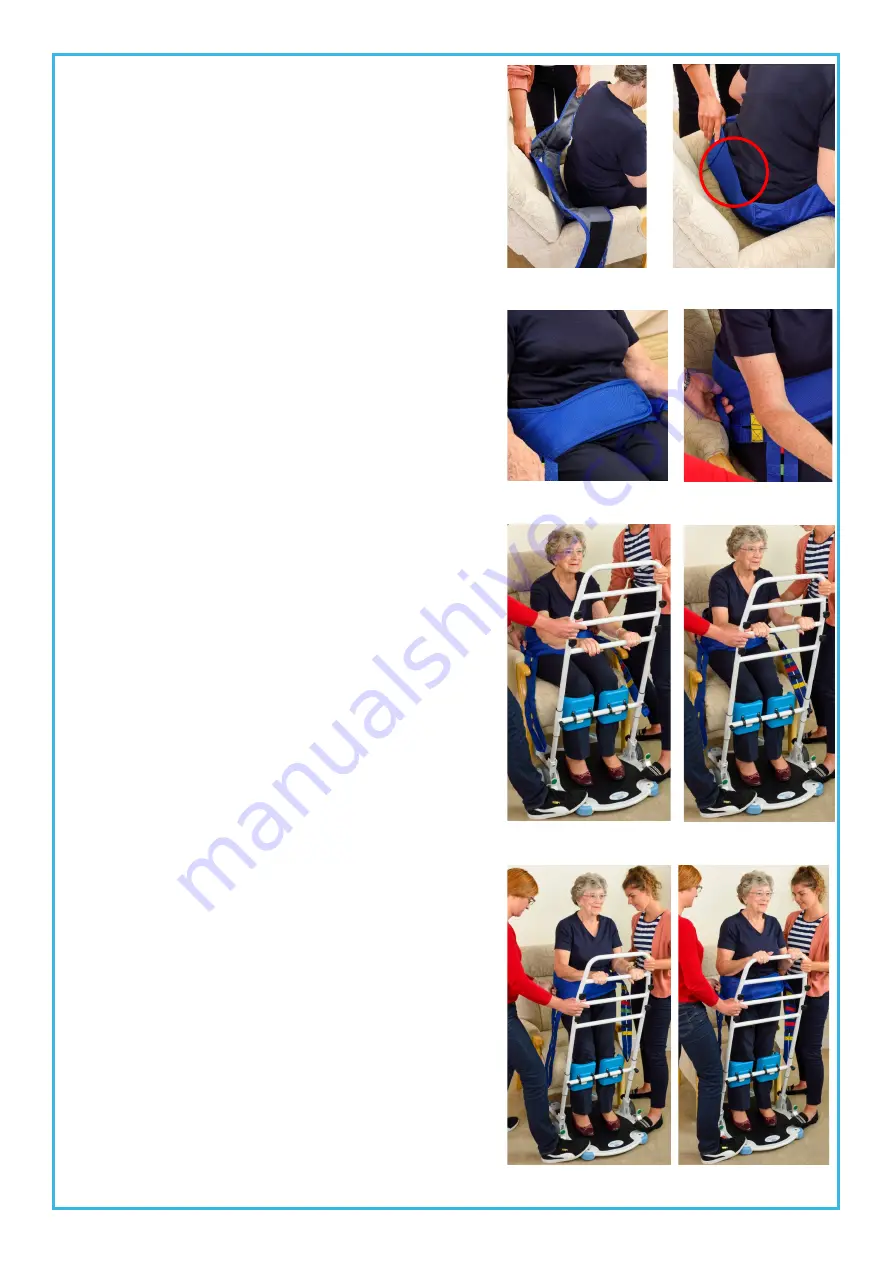
3
3.2 For added support when rising or lowering:
The belt is primarily to provide additional support to
the user during transfers. If it is to be used to assist
the user when rising and lowering, consideration
should be given to the number of carers needed to
do so.
A risk assessment should be completed prior to use
and the carers must comply with good manual
handling practice.
3.2.1
To fit the belt when the user is seated:
1.
Pass the belt loosely around the user,
figure 8.
2.
Position the belt under the bottom and
lower back such that the elastic section is
at the top, figure 9.
3.
Fasten using the Velcro strap, figure 10.
Ensure the belt cannot slide up or down and the
handles on the sides are accessible, figure 11.
3.2.2
To assist rising:
Position the aid in front of the seated user.
1.
Both carers place one foot on the aid and
hold the handle to counterbalance the aid,
figure 12.
2.
Guide the user to a standing position using
the handles on the sides of the safety belt,
figures 13, 14.
3.
Once the user is standing, figure 15, secure
the belt to the aid, see section 3.1.
3
.2.3
To assist lowering:
Position the aid in front of the seat.
1.
Both carers place one foot on the aid and
hold the handle to counterbalance the aid,
figure 15.
2.
Hold the handles on the side of the safety
belt and unhook the belt from the aid, see
section 5.1 .
3.
Guide the user to a seated position using
the handles on the sides of the safety belt,
figures 14, 13.
Figure 8
Figure 9
Figure 10
Figure 12
Figure 13
Figure 15
Figure 14
Figure 11






















